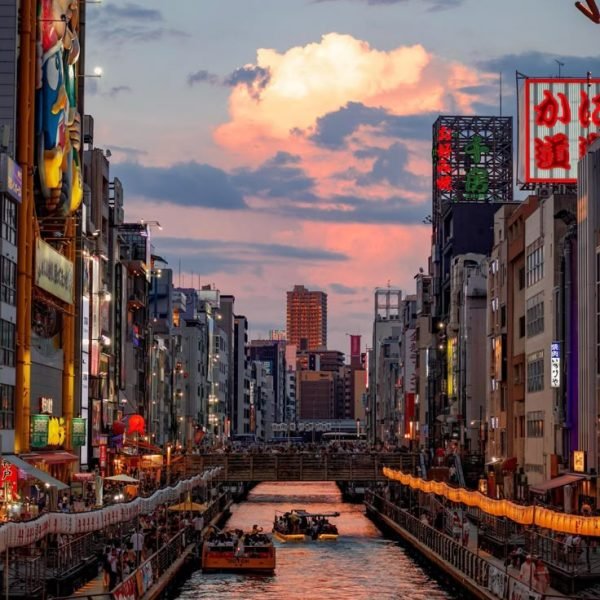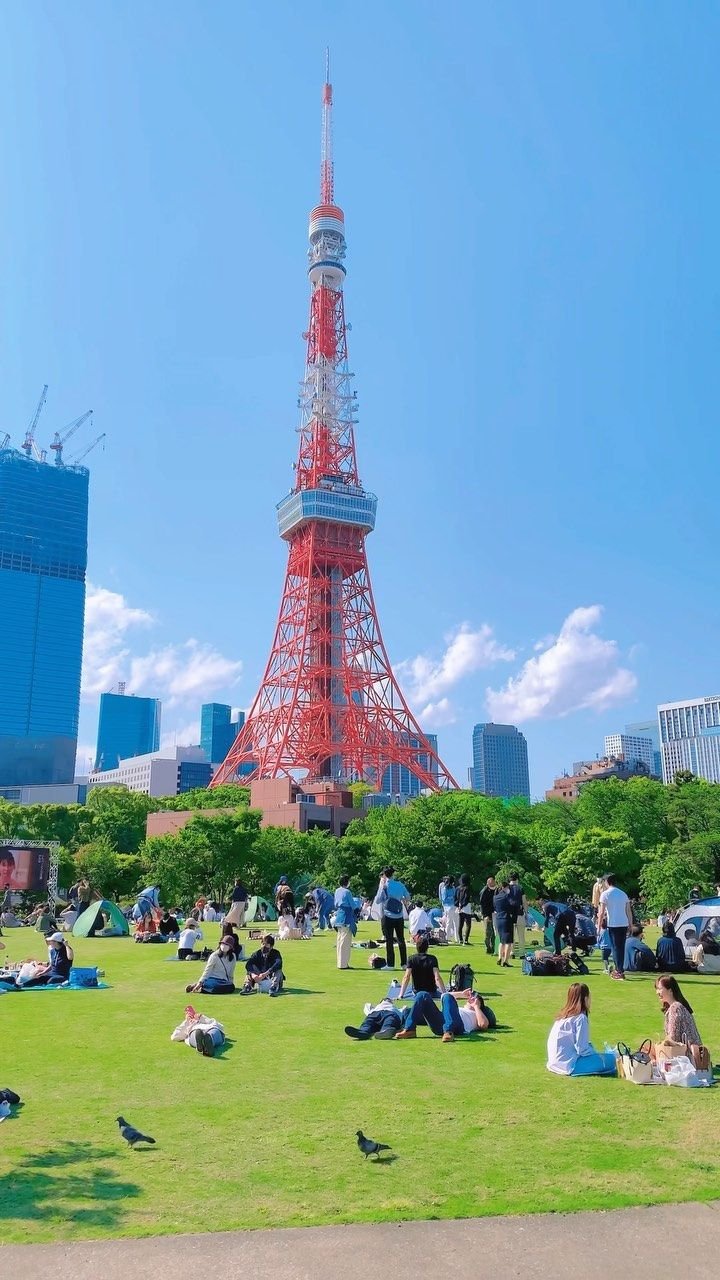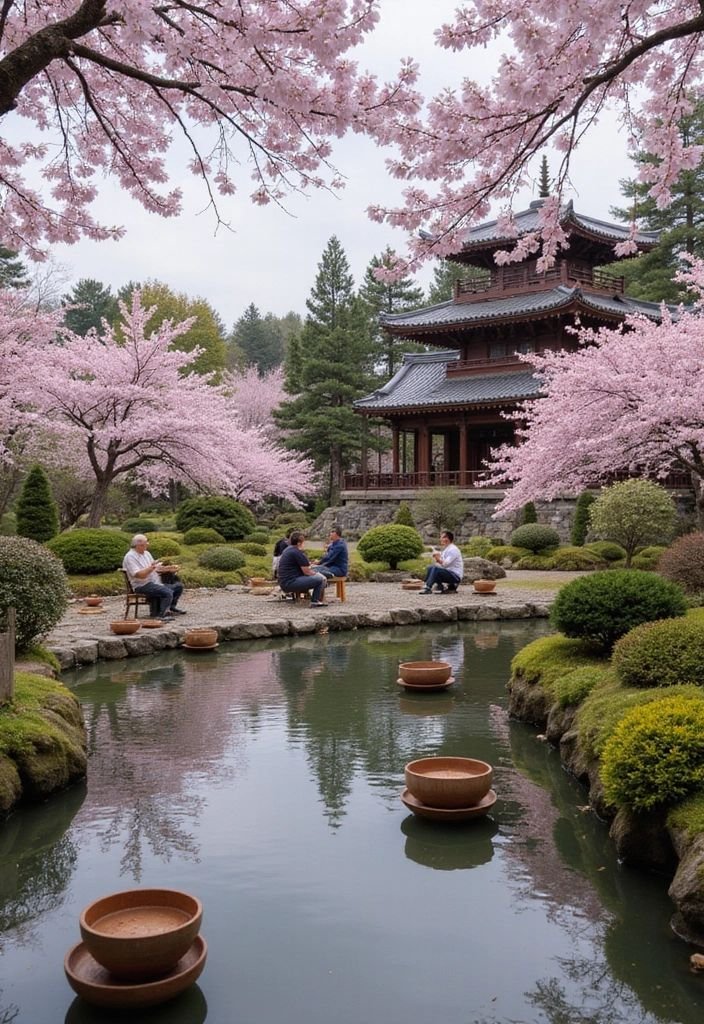Japan
Welcome to Japan
Afghanistan, a land of rugged mountains, ancient history, and rich cultural heritage, is gradually re-emerging as a destination for adventurous travelers in 2025. Despite decades of conflict, the country offers unique experiences for those willing to explore its breathtaking landscapes, historic sites, and vibrant bazaars. With careful planning and respect for local customs, visitors can discover a side of Afghanistan few outsiders have seen.
From the bustling metropolis of Tokyo to the tranquil beauty of Kyoto’s historic districts, and from the snowy peaks of Hokkaido to the tropical beaches of Okinawa, Japan’s diverse regions invite travelers to explore and discover. The country’s unique charm lies in its seamless fusion of old and new — ancient tea ceremonies and samurai castles sit alongside high-speed bullet trains and avant-garde fashion. Visitors can immerse themselves in centuries-old festivals, soak in natural hot springs, hike scenic trails, or indulge in sushi crafted by master chefs. Japan’s reputation for hospitality, cleanliness, and safety makes it an inviting destination for travelers worldwide.
1.
Unparalleled Cultural Heritage: Afghanistan is home to some of the world’s most remarkable historical sites, including the ancient Buddhist statues of Bamyan, the Minaret of Jam, and the stunning mosques of Herat and Mazar-i-Sharif. These sites offer a glimpse into the country’s rich tapestry of civilizations and religious traditions.
![[JAPAN] 10 BEST PHOTO SPOTS IN TOKYO for Instagram-worthy Shots [JAPAN] 10 BEST PHOTO SPOTS IN TOKYO for Instagram-worthy Shots](https://otravelguide.com/wp-content/uploads/elementor/thumbs/JAPAN-10-BEST-PHOTO-SPOTS-IN-TOKYO-for-Instagram-worthy-Shots-r8000gje3952pgjiu6lj5raonh32ppntlbba4a8meo.jpg)
2.
Stunning Natural Landscapes: From the remote Wakhan Corridor in the northeast, ideal for trekking and wildlife spotting, to the dramatic mountain vistas around Bamyan, Afghanistan’s natural beauty is both pristine and awe-inspiring. The country’s varied terrain provides opportunities for hiking, photography, and experiencing traditional rural life.

Planning Your Trip
Visa Information
All foreign nationals require a visa to enter Afghanistan. Visa applications must be made in person at an Afghan consulate or embassy, with most tourist visas issued for single entries valid up to one month. For longer stays or business purposes, extended or multiple-entry visas may be available upon request through the Ministry of Foreign Affairs in Kabul. Applicants need a valid passport with at least six months’ validity, completed application forms, passport photos, and sometimes letters of introduction or proof of employment depending on the visa type. It is essential to schedule an appointment in advance and comply with all consular requirements to avoid delays or refusals.
Best Time to Visit
Japan’s climate varies widely from north to south, so the best time to visit depends on your interests:
- Spring (March to May): This is the most popular season, famous for cherry blossom (sakura) viewing. Cities and countryside alike burst into pink and white blooms, creating iconic, picturesque scenes. The weather is mild and pleasant, ideal for sightseeing.
- Autumn (September to November): Another favorite season, autumn brings crisp air and spectacular fall foliage, especially in Kyoto, Nikko, and the Japanese Alps. The colors range from fiery reds to golden yellows, perfect for hiking and photography.
- Winter (December to February): Northern Japan, including Hokkaido, becomes a winter wonderland with world-class skiing and snow festivals. The milder southern regions like Okinawa offer a warm escape. Winter is also a great time to enjoy Japan’s hot springs.
- Summer (June to August): Summer features lush greenery and lively festivals such as Gion Matsuri in Kyoto. However, it can be hot and humid, especially in cities. Early summer also marks the rainy season (tsuyu), so pack accordingly.
Getting To and Around
Arrival:
Japan’s major international gateways include Tokyo’s Narita and Haneda airports, Kansai International Airport near Osaka, and Chubu Centrair International Airport near Nagoya. These airports offer excellent connectivity worldwide and efficient customs and immigration services.
Transportation Within Japan:
Japan’s public transportation system is world-renowned for its punctuality, cleanliness, and convenience. The Japan Rail (JR) network connects major cities with high-speed Shinkansen (bullet trains) that can reach speeds up to 320 km/h (200 mph). The JR Pass, available for foreign tourists, offers unlimited travel on JR trains for a set period and is highly cost-effective for multi-city itineraries.
In cities, extensive subway and bus networks make urban travel easy. IC cards like Suica and Pasmo simplify fare payment across trains, buses, and even convenience stores.
For exploring rural areas or regions not served by trains, renting a car is an option, though driving in Japan requires an International Driving Permit and familiarity with local traffic rules.

Accommodation
Japan offers an extraordinary variety of accommodation options that cater to every type of traveler, from traditional cultural experiences to ultra-modern and budget-friendly stays. Whether you want to immerse yourself in centuries-old customs, enjoy futuristic convenience, or find a cozy home away from home, Japan’s lodging options are as diverse as the country itself.
Accommodation Options
Traditional Japanese Stays: Ryokan and Temple Lodgings
For a truly authentic experience, staying in a ryokan is highly recommended. Ryokans are traditional Japanese inns featuring tatami-matted rooms, futon bedding, sliding shoji screens, and often communal baths fed by natural hot springs (onsen). Guests typically wear yukata robes and enjoy kaiseki meals — beautifully presented multi-course dinners made from seasonal, local ingredients. Popular ryokans such as Hoshinoya Kyoto and Kagaya in Ishikawa offer serene atmospheres and legendary hospitality, ideal for travelers seeking cultural immersion.
For those interested in spiritual tranquility, shukubo (temple lodgings) provide a unique opportunity to stay in Buddhist temples. These lodgings often include participation in morning prayers and meditation sessions, along with vegetarian meals. Mount Koya, a major pilgrimage site, is famous for its welcoming temple accommodations where visitors can experience Zen calm high in the mountains.
Modern and Convenient: Business Hotels and Capsule Hotels
Japan’s business hotels are compact, efficient, and clean, designed primarily for short stays by business travelers but perfect for tourists who want convenience and affordability. These hotels are often located near train stations and city centers, offering amenities like free Wi-Fi, breakfast, and sometimes public baths. Chains such as APA Hotel and Tokyu Stay are widespread and reliable.
One of Japan’s most iconic and unique accommodation types is the capsule hotel. These futuristic pods provide a private sleeping space equipped with a mattress, reading light, and sometimes a small TV or control panel, stacked in rows like drawers. Capsule hotels are budget-friendly (typically ¥2,000–¥6,000 per night) and great for solo travelers or those with late-night arrivals. Facilities usually include shared showers, lounges, and sometimes onsen baths. Women-only floors and secure lockers add safety and privacy.
Apartments, Machiya, and Longer Stays
For families, groups, or travelers planning extended visits, renting an apartment or a machiya (traditional Japanese townhouse) can be ideal. Machiya, especially in Kyoto and Kanazawa, offer a blend of traditional architecture with modern comforts such as kitchens, bathrooms, and laundry facilities. These homes often feature tatami rooms, futons, sliding paper screens, and small gardens, sleeping up to nine guests.
Short-term rentals via platforms like Airbnb (known locally as minpaku) provide a home-like environment with kitchens and living spaces, allowing you to live like a local. However, be sure to check the property’s license and house rules, as Japan’s strict regulations govern private rentals.
Budget and Unique Options
Hostels and guesthouses are plentiful, especially in major cities and popular tourist areas. Many offer dormitory beds or private rooms, communal kitchens, and social lounges, making them perfect for budget travelers and backpackers.
For an adventurous night, some travelers opt for capsule hotels or even love hotels, which provide short-stay rooms with quirky themes and amenities.

Food and Drink
Japanese cuisine is celebrated worldwide for its freshness, seasonality, and artistry. Eating in Japan is not just about nourishment but a cultural experience that reflects centuries of tradition and regional diversity.
Traditional Japanese Cuisine
- Sushi and Sashimi: Fresh, high-quality raw fish served with vinegared rice or alone. From conveyor-belt sushi to Michelin-starred restaurants, sushi is a must-try.
- Ramen: A comforting noodle soup with countless regional variations, from the rich tonkotsu pork broth of Kyushu to the soy-based broths of Tokyo.
- Tempura: Lightly battered and deep-fried seafood and vegetables, served with dipping sauce.
- Kaiseki: A multi-course haute cuisine meal that highlights seasonal ingredients with meticulous presentation, often enjoyed at ryokans.
- Okonomiyaki: A savory pancake with cabbage, meat, seafood, and toppings, popular in Osaka and Hiroshima.
- Tonkatsu: Breaded and deep-fried pork cutlet, crispy on the outside and tender inside.
- Udon and Soba: Thick wheat noodles (udon) and thin buckwheat noodles (soba) served hot or cold, often with dipping sauces or in broth.
Regional Specialties
Japan’s diverse geography means each region has its own culinary delights:
- Hokkaido: Famous for fresh seafood, dairy products, and miso ramen.
- Kyoto: Known for delicate kaiseki cuisine, yuba (tofu skin), and matcha sweets.
- Osaka: The “kitchen of Japan,” renowned for street foods like takoyaki (octopus balls) and kushikatsu (deep-fried skewers).
- Okinawa: Unique island cuisine featuring pork, tropical fruits, and dishes influenced by Chinese and Southeast Asian flavors.
Street Food and Markets
Vibrant markets such as Tsukiji Outer Market in Tokyo and Nishiki Market in Kyoto offer fresh seafood, grilled skewers, mochi, and other quick bites. Street vendors sell snacks like taiyaki (fish-shaped cakes filled with sweet bean paste), yakitori (grilled chicken skewers), and dango (sweet rice dumplings).
Dining Culture and Etiquette
Japanese dining emphasizes respect and mindfulness. It is customary to say “Itadakimasu” before eating and “Gochisousama” after finishing a meal. Slurping noodles is not only acceptable but encouraged as a sign of enjoyment.
Many restaurants offer plastic food displays outside to help you choose dishes, and vending machines for ordering are common in casual eateries.
Beverages
- Green Tea: Served hot or cold, green tea is a staple drink, often accompanying meals or tea ceremonies.
- Sake: Rice wine enjoyed warm or chilled, with a wide range of flavors and qualities.
- Beer: Popular brands include Asahi, Kirin, and Sapporo.
- Whisky: Japanese whisky has gained international acclaim for its smoothness and complexity.
- Soft Drinks: Unique flavors like melon soda and Calpis (a milky, slightly tangy drink) are popular.

Must-See Attractions
Japan in 2025 is a country where timeless tradition meets cutting-edge innovation, offering travelers a rich tapestry of experiences. From historic temples and serene gardens to vibrant cities and breathtaking natural landscapes, here are some must-see attractions that should be on your radar.
- Fushimi Inari-taisha Shrine, Kyoto
One of Japan’s most iconic sites, Fushimi Inari-taisha is famous for its thousands of vermilion torii gates that form winding tunnels up the sacred Mount Inari. This Shinto shrine honors Inari, the god of rice and prosperity, and offers a spiritual and visually stunning journey. Walking the trail through the gates, visitors encounter smaller shrines, fox statues, and panoramic views of Kyoto city, making it a perfect blend of culture and nature.
- Kinkakuji Temple (Golden Pavilion), Kyoto
Kinkakuji is a Zen Buddhist temple whose top two floors are covered in gold leaf, reflecting beautifully in the surrounding pond. The temple is set within meticulously maintained gardens that change with the seasons, providing a tranquil and photogenic setting. It’s a must-visit for those seeking serenity and classic Japanese aesthetics.
- Shinjuku Gyoen National Garden, Tokyo
This expansive garden in the heart of Tokyo offers a peaceful escape from the city’s bustle. Featuring traditional Japanese, English, and French garden styles, Shinjuku Gyoen is especially popular during cherry blossom season and autumn foliage. It’s ideal for leisurely strolls, picnics, and photography.
- Beppu, Oita Prefecture – Japan’s Hot Spring Capital
Known for its therapeutic onsens, Beppu is a haven for relaxation. Beyond soaking in the hot springs, visitors can explore the city’s bamboo crafts and the architecturally notable Comico Art Museum by Kengo Kuma. Beppu offers a unique blend of wellness and culture.
- Aomori – Tradition and Art
Aomori combines vibrant festivals like the Nebuta Festival with stunning natural landscapes. The recently opened Tsugaru train route offers picturesque views of rural Japan, perfect for travelers seeking a slower pace and authentic cultural experiences.
- Osaka World Expo 2025
Taking place from April to October, the Osaka World Expo is a highlight event showcasing innovations in sustainability, health, and digital technology. The futuristic Japanese pavilion and immersive art and technology exhibits promise a glimpse into the future of society.
- Naoshima Island, Setouchi Region
For contemporary art lovers, Naoshima is a must-visit. The island is dotted with art museums, installations, and sculptures set against beautiful coastal scenery. The 2025 Setouchi Triennale art festival further enriches the cultural offerings here.
- Himeji Castle
One of Japan’s best-preserved original castles, Himeji Castle is a UNESCO World Heritage site known for its elegant white facade and intricate defensive design. Visiting during cherry blossom season adds an extra layer of beauty to this historic landmark.
- Kawaguchiko and Mount Fuji Views
Lake Kawaguchiko offers some of the best views of Mount Fuji, especially during cherry blossom and autumn leaf seasons. Visitors can enjoy cycling around the lake, cable car rides, and visits to museums and tea houses with stunning mountain backdrops.
- Edo-Tokyo Museum
Located in Tokyo, this museum offers a fascinating insight into the city’s transformation from the Edo period to the modern metropolis it is today. Exhibits include life-sized replicas, historical artifacts, and interactive displays.

Must-Do Activities
Japan’s allure is not only in its sights but also in the experiences that immerse you in its culture, history, and natural beauty. Here are top activities to include in your itinerary.
- Walk the Torii Gates of Fushimi Inari
Experience the spiritual journey by walking through the thousands of bright red torii gates at Fushimi Inari. The hike to the summit takes about 2-3 hours and rewards visitors with panoramic views and a sense of connection to Japan’s Shinto heritage.
- Participate in a Traditional Tea Ceremony
Engage in a Japanese tea ceremony, a ritual that embodies harmony, respect, purity, and tranquility. Many tea houses in Kyoto and Tokyo offer visitors the chance to learn about matcha preparation and the cultural significance behind the ceremony.
- Explore the Osaka World Expo
Attend the 2025 World Expo in Osaka to witness cutting-edge technology, sustainable innovations, and cultural exhibitions from around the world. The event’s theme, “Designing the society of the future,” invites visitors to imagine tomorrow’s world through interactive displays and performances.
- Relax in Beppu’s Hot Springs
Spend time soaking in Beppu’s famous onsens, each with unique mineral compositions and therapeutic properties. Try the “Hells of Beppu,” a series of spectacular hot spring pools for viewing rather than bathing, showcasing vivid colors and geothermal activity.
- Cycle Around Naoshima Island
Rent a bicycle and explore Naoshima’s art installations, museums, and charming fishing villages at your own pace. The island’s blend of nature and contemporary art creates a peaceful yet stimulating environment.
- Attend the Nebuta Festival in Aomori
If visiting in August, don’t miss the Nebuta Festival, where massive illuminated floats parade through the streets accompanied by dancers and musicians. The festival is a vibrant celebration of local culture and artistry.
- Visit the Historic Temples of Kyoto
Spend time exploring Kyoto’s many temples beyond the famous ones, such as Kiyomizudera with its wooden stage and Otowa waterfall, or the tranquil gardens of Ryoanji. Each temple offers unique architecture, history, and seasonal beauty.
- Hike the Ancient Pilgrimage Routes
Japan offers ancient pilgrimage trails, such as the Kumano Kodo in the Kii Peninsula, where you can hike through cedar forests, visit sacred shrines, and experience rural Japan’s spiritual heritage.
- Enjoy Seasonal Festivals and Cherry Blossoms
Timing your visit during cherry blossom season (late March to early April) or autumn foliage (November) allows you to witness Japan’s natural beauty at its peak. Participate in hanami (flower viewing) picnics or attend autumn festivals celebrating the harvest.
- Explore Tokyo’s Contrasts
Dive into Tokyo’s eclectic neighborhoods: shop in the trendy boutiques of Harajuku, explore the electronics and anime culture of Akihabara, relax in the gardens of the Imperial Palace, and experience the vibrant nightlife of Shinjuku.
Japan in 2025 is a destination of endless discovery, blending ancient traditions with futuristic visions. Whether you’re marveling at golden temples, cycling through art islands, or enjoying world-class festivals, these must-see attractions and must-do activities promise a rich and memorable journey through this extraordinary country.

Travel Tips
Japan remains one of the safest and most welcoming countries for travelers in 2025. Whether you’re exploring bustling cities like Tokyo and Osaka or venturing into serene rural landscapes, understanding key safety advice, local customs, and basic language will help you enjoy a smooth and respectful journey.
Safety Advice
Japan consistently ranks among the safest countries globally, with low crime rates and a strong culture of respect and order. However, staying vigilant and prepared enhances your travel experience.
- General Safety
- Exercise normal safety precautions. Petty crimes like pickpocketing are rare but can occur in crowded tourist spots, train stations, and markets. Use zipped bags or money belts to secure valuables.
- Public spaces, including streets and parks, are generally safe even at night. However, avoid poorly lit or isolated areas after dark, especially in less populated towns.
- Women traveling alone should be aware of occasional verbal harassment or inappropriate behavior, particularly on crowded trains. Many train lines offer women-only cars during rush hours for added comfort and safety.
- Emergency Contacts
- Dial 110 for police and 119 for fire or medical emergencies.
- Tokyo has an English-speaking police helpline (Monday to Friday, 8:30 am to 5:15 pm) at 3501-0110.
- Familiarize yourself with the location of nearby hospitals, police stations, and tourist assistance centers.
- Natural Disasters and Preparedness
Japan is prone to earthquakes, typhoons, and volcanic activity. The country’s disaster preparedness is excellent, with clear evacuation routes and public alerts.
- Download safety apps like the Japan Meteorological Agency app for real-time updates.
- Follow instructions from local authorities during emergencies.
- Carry a basic emergency kit with essentials such as water, snacks, a flashlight, and a portable phone charger.
- Transportation Safety
- Japan’s public transport is world-class: punctual, clean, and safe. Use trains, subways, and buses with confidence.
- When taking taxis, use officially marked vehicles and insist on the meter to avoid overcharging. Having your destination written in Japanese helps drivers unfamiliar with English.
- If renting a car, remember Japan drives on the left. Request a “foreign driver” sticker to alert other drivers. Always carry an International Driving Permit and obey traffic laws. Roads can be narrow and busy in cities.
- Health and Hygiene
- Japan’s healthcare system is excellent. Carry travel insurance to cover medical expenses.
- Tap water is safe to drink nationwide.
- Practice good hygiene and use hand sanitizer, especially in crowded places.
- Stay updated on vaccinations and health recommendations before travel.
Local Customs
Understanding and respecting Japanese customs will deepen your connection with the culture and ensure positive interactions.
- Politeness and Respect
- Bowing is a common greeting and sign of respect. A slight bow is typical for casual greetings; deeper bows are reserved for formal occasions.
- Use polite language and gestures. Saying “arigatou gozaimasu” (thank you very much) and “sumimasen” (excuse me/sorry) goes a long way.
- Avoid loud conversations, especially on public transport. Japan values quiet and orderliness.
- Dress Code
- Dress modestly, especially when visiting religious sites like temples and shrines.
- Remove shoes when entering homes, traditional inns (ryokan), and some restaurants. Look for shoe racks or signs.
- In urban areas, casual Western attire is common and acceptable.
- Dining Etiquette
- Before eating, say “itadakimasu” to express gratitude. After finishing, say “gochisousama deshita.”
- Do not stick chopsticks upright in rice, as this resembles funeral rituals.
- Avoid pointing with chopsticks or passing food directly from chopstick to chopstick.
- It’s polite to finish all the food on your plate.
- Public Behavior
- Queuing is strictly observed, whether at train stations, bus stops, or stores.
- Smoking is banned in many public areas; designated smoking zones are clearly marked.
- Avoid eating while walking; it’s considered impolite.
- Photography is generally allowed but ask permission before photographing people, especially in rural areas or religious sites.
- Gift Giving and Hospitality
- Gift-giving is an important tradition. If invited to a home, bring a small gift such as sweets or souvenirs.
- When receiving gifts, accept with both hands as a sign of respect.
Language Basics
While English is widely taught and signage in major cities often includes English, learning a few basic Japanese phrases will enhance your experience and show respect.
Common Japanese Phrases:
- Hello: Konnichiwa (こんにちは)
- Thank you: Arigatou gozaimasu (ありがとうございます)
- Yes: Hai (はい)
- No: Iie (いいえ)
- Excuse me / Sorry: Sumimasen (すみません)
- Please: Onegaishimasu (お願いします)
- Do you speak English?: Eigo o hanasemasu ka? (英語を話せますか?)
- Where is…?: … wa doko desu ka? (…はどこですか?)
- Help!: Tasukete! (助けて!)
- I don’t understand: Wakarimasen (分かりません)
Useful Tips:
- Speak slowly and clearly.
- Use gestures or maps if language barriers arise.
- Many tourist spots and transport hubs have English-speaking staff or multilingual information.
Final Thoughts
Japan in 2025 remains a remarkably safe and hospitable destination for travelers. By exercising normal safety precautions, being prepared for natural events, and respecting local customs, visitors can enjoy a seamless and enriching experience. Learning a few basic Japanese phrases and understanding cultural etiquette will help you connect with locals and navigate daily interactions with ease. Whether wandering ancient temples, riding the Shinkansen, or savoring authentic cuisine, your journey through Japan will be safe, respectful, and unforgettable.

